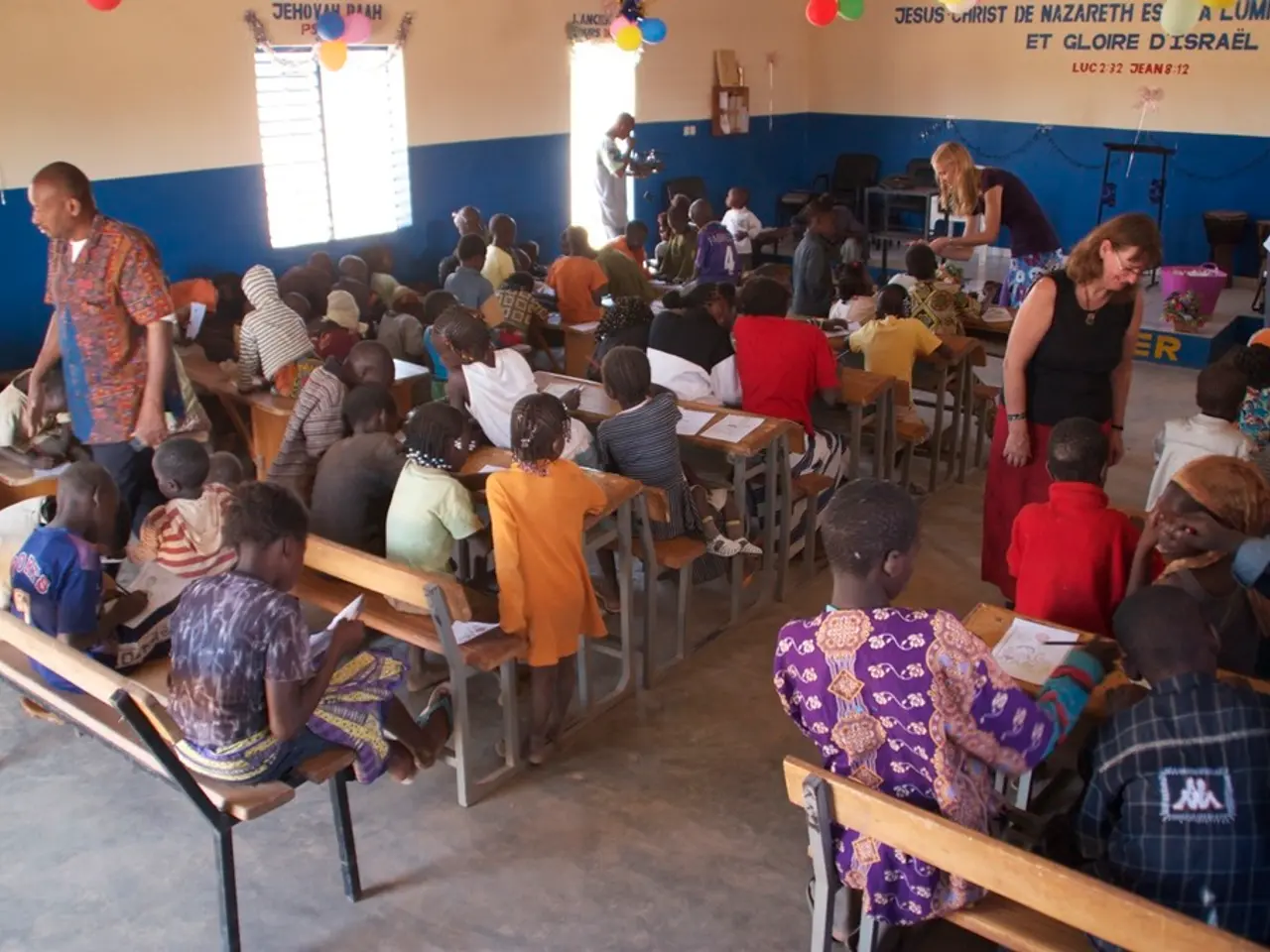Tactics for Reinforcing English Language Competence in Non-native Speakers
In an increasingly diverse educational landscape, the academic success and linguistic development of English Language Learners (ELLs) within an inclusive classroom setting are of utmost importance. By implementing effective pedagogical strategies, educators can create a supportive, language-rich environment that fosters both content understanding and language acquisition.
Key strategies include:
1. Creating a Language-Rich and Visually Engaging Classroom: Organise the classroom space to be welcoming, uncluttered, and conducive to collaboration. Utilise vocabulary displays, anchor charts, and word walls that are visually appealing and accessible to students. Involve students in creating these resources to promote ownership and independence. Incorporate diverse literature that reflects students’ cultural backgrounds and provides bilingual or native-language resources, strengthening identity and engagement. Visual schedules and classroom labels in English and the students’ native languages help reduce anxiety and support navigation in a new environment. Integrate technology tools like Google Translate to support language learning dynamically.
2. Adjusting Teacher Communication: Teachers should modify their spoken language by slowing down speech without over-enunciating, using simple sentence structures, avoiding idioms or cultural references without explanation, and emphasising key vocabulary through repetition. Employ gestures, facial expressions, and visuals to increase comprehension. As students improve, teachers can gradually increase the complexity of language used.
3. Emotional and Instructional Support Through Inclusive Teaching: Successful inclusive education combines emotional support that fosters a safe learning environment with adaptive instructional practices tailored to meet diverse learner needs. This approach encourages multicultural learning and allows ELLs to access content alongside their peers with adequate academic rigour.
4. Encouraging Academic Rigor and Multi-Modal Expression: Teachers should sustain academic rigor for ELLs by infusing language development into thematic units and allowing students to demonstrate learning through various modes such as writing, speaking, visual arts, and storytelling. Providing ample opportunities for talk helps students develop higher-level academic language and content knowledge simultaneously. Collaborative practices, modelling, and targeted support reinforce that ELLs can achieve grade-level standards with proper scaffolding.
5. Culturally Responsive Teaching and Empowerment: Incorporating culturally responsive practices acknowledges and values students’ linguistic and cultural backgrounds, enhancing motivation and inclusion. Using technology strategically and linking content to students’ lived experiences empower learners and promote engagement.
In addition to these strategies, differentiated instruction tailors lessons to accommodate varying language proficiency levels. The role of technology in supporting ELLs provides diverse tools and platforms that enhance language acquisition, such as language learning software, interactive websites, and online resources like videos and podcasts. Involving families in supporting ELLs establishes a network of encouragement and resources, enhancing student engagement and promoting cultural exchange.
Online resources and communities serve as crucial platforms for ongoing professional growth, offering access to a wealth of materials, including webinars and discussion forums. Schools can create programs that connect families with community resources, offering support in language acquisition and academic achievement. Formative assessments, such as observations and informal quizzes, help educators gauge understanding and provide immediate feedback, enabling adjustments to instruction.
Supporting ELLs is crucial for fostering an inclusive learning environment, enhancing their academic success, social integration, and emotional well-being. By implementing these effective strategies, educators can help ELLs confidently participate and succeed in mainstream education.
- To increase the effectiveness of bilingual education for English Language Learners (ELLs), educators can utilize e-learning tools such as language learning software and interactive websites to enhance language acquisition.
- In professional development programs focused on education-and-self-development, educators can incorporate strategies like instructional support through inclusive teaching, which aims to foster a safe learning environment while meeting diverse learner needs.
- By participating in online communities and utilizing online resources, educators can further their personal growth by gaining access to a wealth of materials, including webinars and discussion forums, that can provide insights into effective strategies for teaching ELLs.




